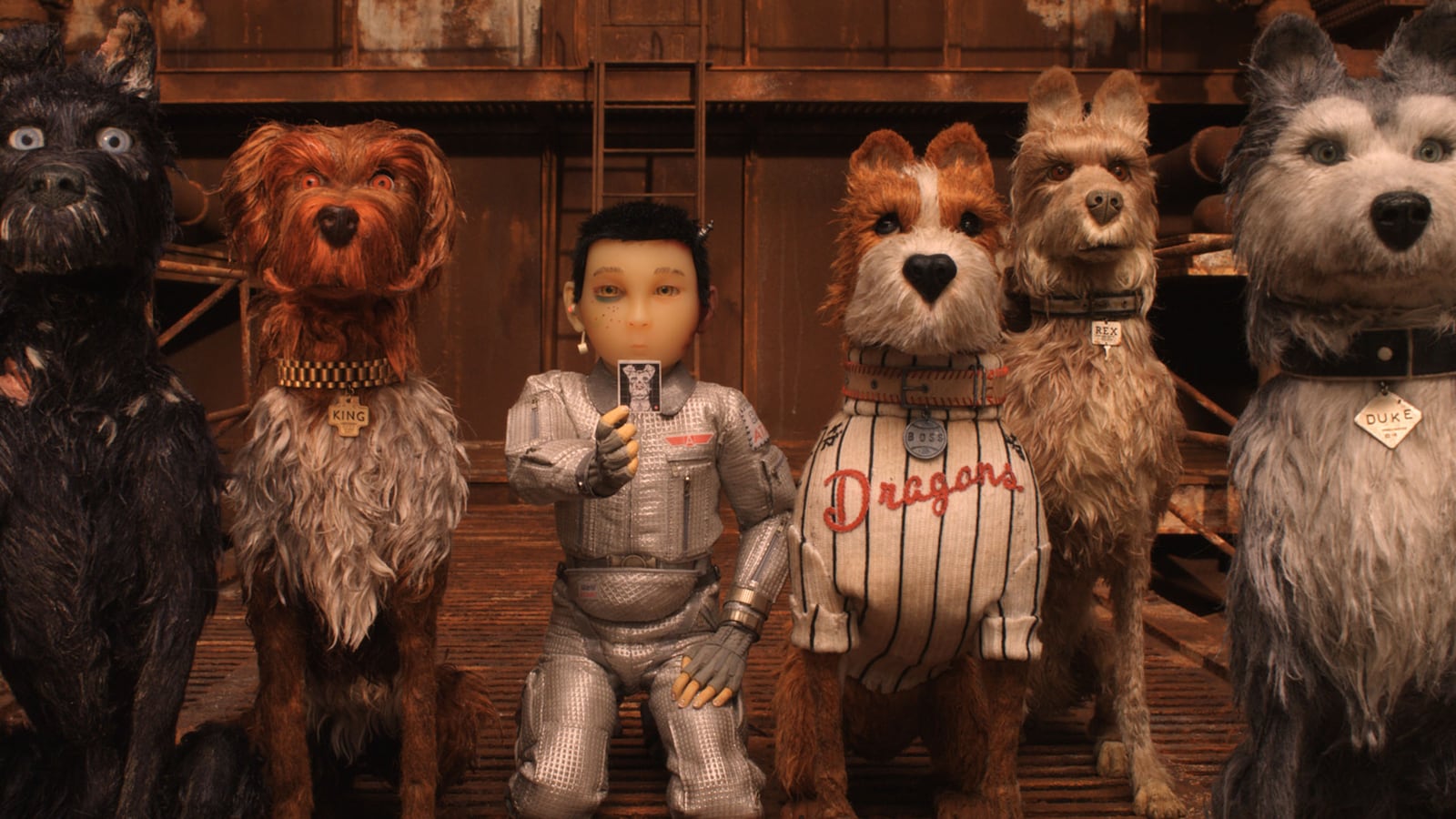Up until very recently (as in up until a day ago), I felt like I was being subjected to a strange form of film criticism gaslighting. At the center of my internal — and partially external — debate was Wes Anderson’s new film, Isle of Dogs, which left me feeling deeply uncomfortable through the entirety of the film’s runtime. The reviews that I’d seen coming out of Berlinale were all positive, as were the overwhelming majority of reviews (and social media posts, for that matter) being written in the lead-up to the film’s release. Was I being gaslit into thinking that I was reacting too strongly? Was I gaslighting myself into thinking that I was taking it too personally, unable to enjoy a movie about a group of adorable dogs?
Luckily, time — and the input of a few other critical voices — has lent me some clarity. As much as it pains me to say as a fan of Anderson’s work, Isle of Dogs is a little culturally insensitive at best, and it’s a shame that that aspect of the film is going so under-discussed. While I’m happy to know that Kunichi Nomura, an actor, writer, and radio personality, is one of the film’s co-writers, he is also the only Japanese person in the film’s core team, and it shows.
The dogs of the fictional city of Megasaki are exiled to Trash Island as a bout of canine flu grows worse and worse. The mayor’s nephew, Atari Kobayashi (voiced by Koyu Rankin), hijacks a plane and heads out to the island to save his dog, Spots (Liev Schreiber). (As an aside, “Atari” is not a name known not for everyday use, but for the American video game company founded by Nolan Bushnell and Ted Dabney, which took the name from a term used in the game of go.) Once on the island, he falls in with a group of strays (voiced by Bryan Cranston, Jeff Goldblum, Bob Balaban, Bill Murray, and Edward Norton, all white, American actors) who help him on his quest.
Again, the general consensus about Isle of Dogs seems to be that it’s great. And in some respects, it is. The stop-motion animation is lovely. The assembled voice actors are great. Were the film set anywhere other than where it is, I’d likely rave about it as much as many of my colleagues. But for better or worse (worse), it’s set in Japan.
Anderson has spoken about the influences of Hayao Miyazaki and Akira Kurosawa upon the film, but Isle of Dogs feels more like a knock-off than homage. There’s no purpose for Anderson’s cribbing beyond liking what Miyazaki and Kurosawa’s films look like. Anderson’s portrayal of Japanese culture falls into that same surface-level appreciation. Public speeches end with haikus, and kabuki performances and sumo wrestling are used as set pieces throughout the film — not unlike another movie from this year, The Outsider. There’s no discernible reason for Anderson’s chosen setting beyond wanting to ape Japanese aesthetics that wouldn’t feel like a stretch, or wishful retroactive thinking. (And notably, the historical “isle of dogs” was Turkish; in 1911, the Governor of Istanbul exiled the city’s stray dogs to the island of Sivriada, resulting in around 80,000 canine deaths.)
Even stranger is the film’s use of language. It’s stressed at the beginning of the movie that the dog’s “barks” have been translated into English, but that all other dialogue will be left alone, with translation being provided when natural, e.g. when an interpreter is on hand. But that’s not entirely true. Whenever there isn’t translation available, the Japanese dialogue is shortened and made more context-friendly, and Japanese characters resort to using anglicized words at strange junctures just to get the point across. Again, it’s a surface-level tribute.
This lack of engagement twists any sense of allegory, with the canine internment camp taking on a certain queasiness given America’s history with regards to its Japanese population. There’s also the problem of the majordomo (Akira Takayama), who is a grotesque caricature. This is to be expected to some extent given his place as a villain in the story, but it’s reminiscent of Hergé’s work in The Blue Lotus, which took place in Shanghai. The Asian protagonists are all relatively realistically drawn, but the Asian villain is an awful cartoon. Is it okay just because he’s evil? And, for that matter, how do we feel about the fact that the mayor has a yakuza tattoo, or that Yoko Ono’s character is literally named Yoko Ono?
The way that the story essentially shelves Atari for the back half of the film only makes things worse. Rather than sticking with Atari, the film’s focus shifts to Tracy (Greta Gerwig), an American exchange student who browbeats first her meek Japanese classmates and then the meek Japanese public into taking action for the sake of the dogs. It’s the classic white savior trope, and it feels no less egregious in Isle of Dogs than anywhere else. In the end, Japanese characters hardly factor into this story about Japan, other than as props. Though “cultural appropriation” may seem overly harsh as a way to describe the film, on the purest level, it’s absolutely true.
It’s strange to me that Isle of Dogs largely seems to be getting a pass for it, while one of Anderson’s earlier films, The Darjeeling Limited, has been called out for its cultural tourism. What sets Isle of Dogs apart — is it a matter of the animation being so stunning that nobody wants to admit that the content being animated isn’t quite as peerless? It’s the sort of thing I’ve been wondering about for some time, given the way that the discussion around Annihilation also either disregarded the film’s whitewashing or went to extreme lengths to try to justify it.
Know this, though: That kind of feigning ignorance, or stretching, only makes things worse — you don’t have to gaslight yourself, and others, in that way. I don’t mind people saying that they enjoyed problematic work so long as they’re also capable of acknowledging that it’s problematic. And in the case of Isle of Dogs, if critical discussion completely ignores the way it “other”s the very thing it claims to be paying tribute to, well, that dog don’t hunt.






